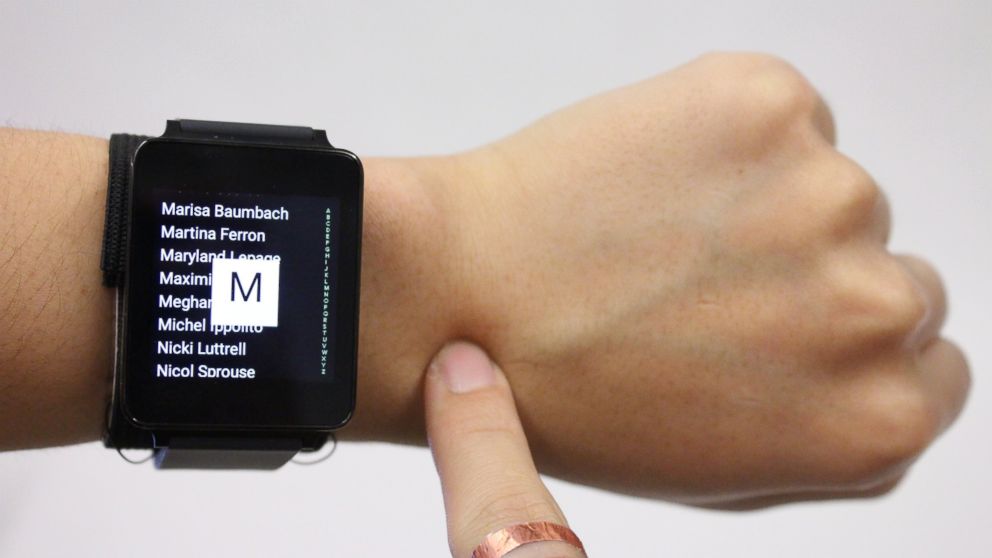This Invention Lets You Use Your Skin as Smartwatch Trackpad
The invention by Carnegie Mellon researchers is called SkinTrack.
— -- Researchers at Carnegie Mellon University have come up with a way to expand the touch screen on a smartwatch by using the wearer's skin around it.
"Human fingers are big while the touchscreens on smartwatches are so small," Ph.D. student Yang Zhang told ABC News.
The new invention, called SkinTrack, allows you to use gestures on your skin, such as swiping or even drawing, as the team's video demo shows.
The team presented a paper this week at a Human-Computer Interaction conference for the Association for Computing Machinery in San Jose, California, led by Zhang, who is the lead author.
"How do you make the screens bigger without actually making them bigger? We looked at the area around the watch," Gierad Laput, a Ph.D. student working on the team, told ABC News.
Zhang said SkinTrack's wrist band and ring aren't obtrusive, since many people already wear watches and rings.
Zhang added it's possible SkinTrack could be integrated into "smart rings," which has been teased by companies like Apple. The iPhone maker filed a patent application last October for an interactive smart ring that could have a touchpad or touchscreen.
"However, since smartwatches are still emerging in the market, it might take a while for smart rings to gain traction," Zhang said.

Here's how it works. A ring around your finger emits a high frequency electrical signal. Whenever the ring touches the skin, the signal propagates into the user's arm. The arm band has electrodes in a specific pattern that's sensitive to direction, using "x" and "y" axes. Using those electrodes, the device can map and track the finger movements.
"It's like how cell towers try to figure out where you are by figuring out the signal delay," Laput said. "In this case, we're arranging electrodes that are sensitive to the 'x' and 'y' direction."
Laput said the team is working closely with industry partners, but can't disclose who they are.
This isn't the first time the researchers have used the skin as an interface. The team has also experimented with buttons on skin.
The researchers are interested in expanding the use of wearable devices.
"Smartwatches are pretty capable computers and can transform your hand into an input and sensing platform," he said.




